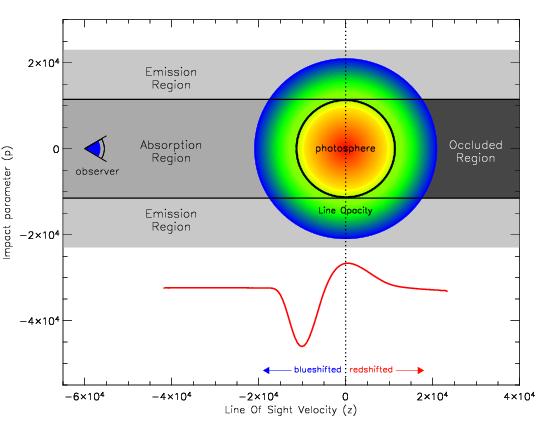
by Ian Czekala | Mar 11, 2011 | Daily Paper Summaries
In a new review article, Jonathan Williams and Lucas Cieza at the Institute for Astronomy (IfA) describe the life-story of protoplanetary disks from formation from collapsing molecular clouds to the end-state of a planetary system. Infrared telescopes like Spitzer and sub-millimeter radio telescopes like the the James Clerk Maxwell Telescope, the Submillimeter Array (SMA), and the Combined Array for Research in Millimeter Astronomy (CARMA) have greatly revolutionized the study of protoplanetary disks because they can probe the emission at the longer wavelengths where the disk emission is strongest.

by Ian Czekala | Feb 23, 2011 | Daily Paper Summaries
It turns out that there is a lot more to the universe than just stars, planets, and galaxies. Much of the “empty space” between these objects is actually host to interesting astrophysical processes, such as star-formation in molecular clouds. Hot, young stars can emit strong radiation that will ionize the surrounding hydrogen gas. Astronomers call these dense regions of ionized hydrogen HII regions.

by Ian Czekala | Feb 11, 2011 | Daily Paper Summaries
If you’ve ever given a speech or played sports inside of a cavernous gymnasium, you are well familiar with how sound can reflect off of the walls and cause an echo. Interestingly, this phenomenon also occurs on cosmic scale–not just with pressure waves like sound (or shocks), but with light.

by Ian Czekala | Jan 30, 2011 | Career Navigation, Personal Experiences
Astronomy is a field that has written records that date far back in history, much of it published in journals, books, and letters. However, only in the later part of the 20th century did the vast tomes of astronomical information meet the internet. Online tools now make it possible to access practically every paper or article ever published and visualize vast amounts of data from telescope archives. This post (to be updated incrementally in the future) will serve as an overview to some of the organizational tools of astronomy that astrobites authors have come to use and love.

by Ian Czekala | Jan 26, 2011 | Daily Paper Summaries
Not all stars are as well-behaved as our Sun. Some reprobate massive stars (greater than several solar masses) can flare, outflow, and even eject a significant amount of their material into the interstellar medium.





